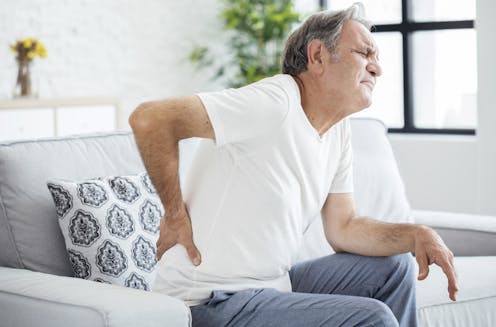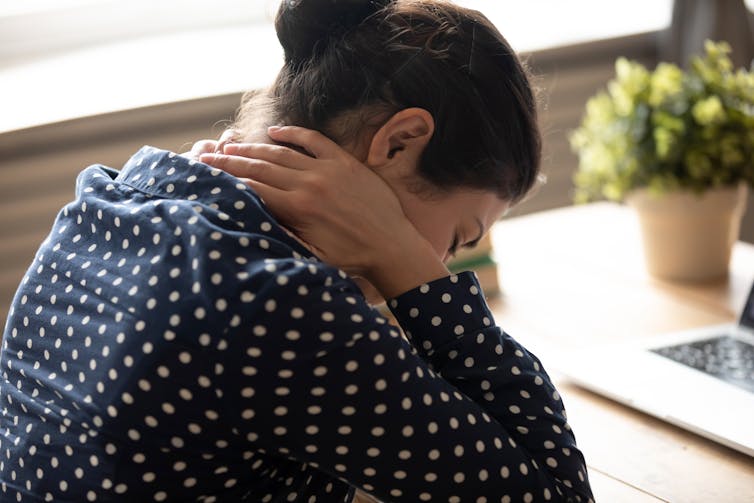Source: The Conversation (Au and NZ) – By Christine Lin, Professor, University of Sydney

Opioids are the one of the most prescribed pain-relief for people with low back and neck pain. In Australia, around 40% of people with low back and neck pain who present to their GP and 70% of people with low back pain who visit a hospital emergency department are prescribed opioids such as oxycodone.
But our new study, published today in the Lancet medical journal, found opioids do not relieve “acute” low back or neck pain (lasting up to 12 weeks) and can result in worse pain.
Prescribing opioids for low back and neck pain can also cause harms ranging from common side effects – such as nausea, constipation and dizziness – to misuse, dependency, poisoning and death.
Our findings show opioids should not be recommended for acute low back pain or neck pain. A change in prescribing for low back pain and neck pain is urgently needed in Australia and globally to reduce opioid-related harms.
Comparing opioids to a placebo
In our trial, we randomly allocated 347 people with acute low back pain and neck pain to take either an opioid (oxycodone plus naloxone) or placebo (a tablet that looked the same but had no active ingredients).
Oxycodone is an opioid pain medicine which can be given orally. Naloxone, an opioid-reversal drug, reduces the severity of constipation while not disrupting the pain relieving effects of oxycodone.
Participants took the opioid or placebo for a maximum of six weeks.
People in the both groups also received education and advice from their treating doctor. This could be, for example, advice on returning to their normal activities and avoiding bed rest.
We assessed their outcomes over a one-year period.
What did we find?
After six weeks of treatment, taking opioids did not result in better pain relief compared to the placebo.
Nor were there benefits to other outcomes such as physical function, quality of life, recovery time or work absenteeism.
More people in the group treated with opioids experienced nausea, constipation and dizziness than in the placebo group.
Results at one year highlight the potential long-term harm of opioids even with short-term use. Compared to the placebo group, people in the opioid group experienced slightly worse pain, and reported a higher risk of opioid misuse (problems with their thinking, mood or behaviour, or using opioids differently from how the medicines were prescribed).
More people in the opioid group reported pain at one year: 66 people compared to 50 in the placebo group.
Read more:
Ouch! The drugs don’t work for back pain, but here’s what does
What will this mean for opioid prescribing?
In recent years, international low back pain guidelines have shifted the focus of treatment from drug to non-drug treatment due to evidence of limited treatment benefits and concern of medication-related harm.
For acute low back pain, guidelines recommend patient education and advice, and if required, anti-inflammatory pain medicines such as ibuprofen. Opioids are recommended only when other treatments haven’t worked or aren’t appropriate.
Guidelines for neck pain similarly discourage the use of opioids.

Shutterstock
Our latest research clearly demonstrates the benefits of opioids do not outweigh possible harms in people with acute low back pain and neck pain.
Instead of advising opioid use for these conditions in selected circumstances, opioids should be discouraged without qualification.
Change is possible
Complex problems such as opioid use need smart solutions, and another study we recently conducted provides convincing data opioid prescribing can be successfully reduced.
The study involved four hospital emergency departments, 269 clinicians and 4,625 patients with low back pain. The intervention comprised of:
- clinician education about evidence-based management of low back pain
- patient education using posters and handouts to highlight the benefits and harms of opioids
- providing heat packs and anti-inflammatory pain medicines as alternative pain-management treatments
- fast-tracking referrals to outpatient clinics to avoid long waiting lists
- audits and feedback to clinicians on information about opioid prescribing rates.
This intervention reduced opioid prescribing from 63% to 51% of low back pain presentations. The reduction was sustained for 30 months.
Key to this successful approach is that we worked with clinicians to develop suitable pain-management treatments without opioids that were feasible in their setting.
Read more:
Why does my back get so sore when I’m sick? The connection between immunity and pain
More work is needed to evaluate this and other interventions aimed at reducing opioid prescribing in other settings including GP clinics.
A nuanced approach is often necessary to avoid causing unintended consequences in reducing opioid use.
If people with low back pain or neck pain are using opioids, especially at higher doses over an extended period of time, it’s important they seek advice from their doctor or pharmacist before stopping these medicines to avoid unwanted effects when the medicines are abruptly stopped.
Our research provides compelling evidence opioids have a limited role in the management of acute low back and neck pain. The challenge is getting this new information to clinicians and the general public, and to implement this evidence into practice.
![]()
Christine Lin receives funding from the National Health and Medical Research Council. She is affiliated with the Australia and New Zealand Musculoskeletal (ANZMUSC) Clinical Trials Network and the Australia and New Zealand Low Back Pain (ANZBACK) Centre of Research Excellence. She is a registered physiotherapist and serves on the editorial board of Journal of Physiotherapy and British Journal of Sports Medicine.
Andrew McLachlan receives research funding from the NHMRC and the Sydney Pharmacy School receives research scholarship funding from GSK for a PhD student under his supervision. Andrew has served as a paid consultant on Australian government committees related to medicines regulation.
Christopher Maher received funding for the OPAL trial from Australia’s National Health and Medical Research Council; University of Sydney Faculty of Medicine and Health; and SafeWork SA.
Caitlin Jones does not work for, consult, own shares in or receive funding from any company or organisation that would benefit from this article, and has disclosed no relevant affiliations beyond their academic appointment.
– ref. Opioids don’t relieve acute low back or neck pain – and can result in worse pain, new study finds – https://theconversation.com/opioids-dont-relieve-acute-low-back-or-neck-pain-and-can-result-in-worse-pain-new-study-finds-203244








